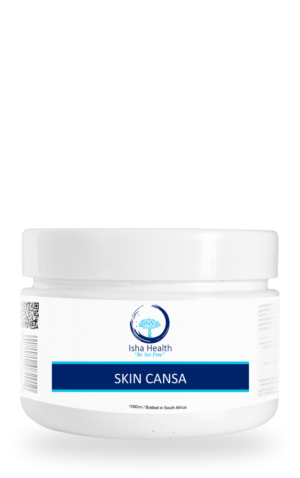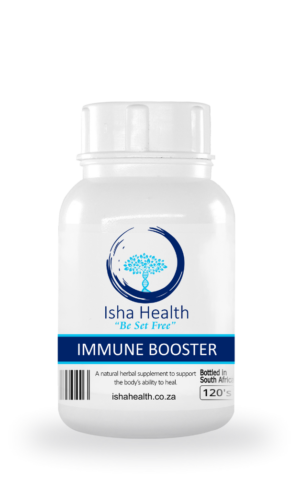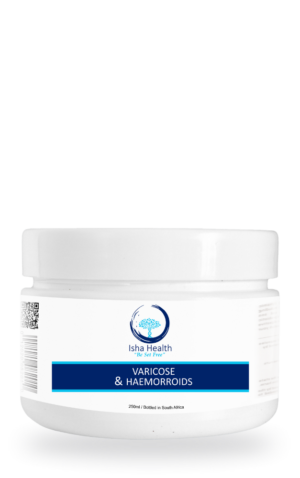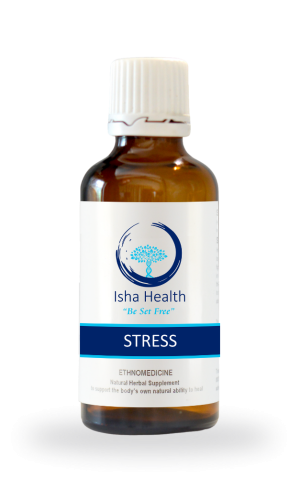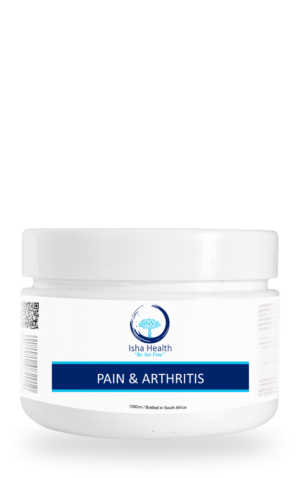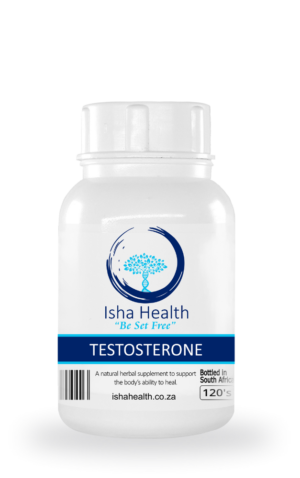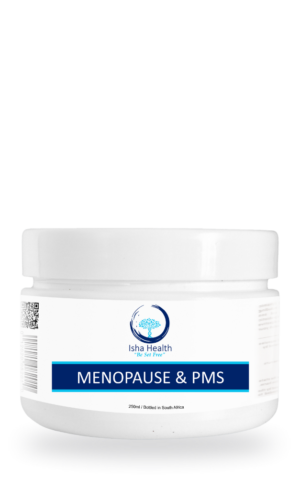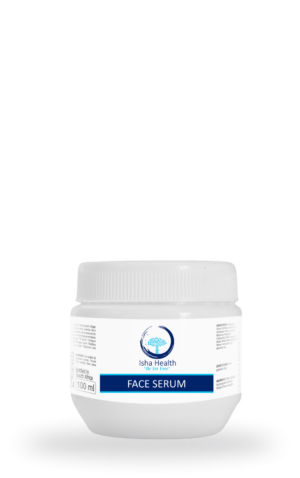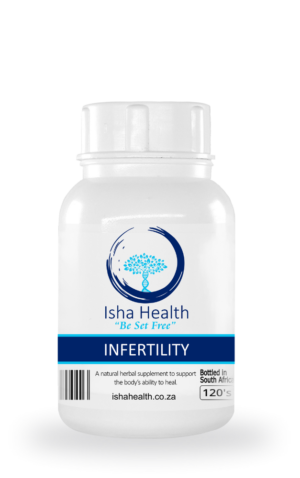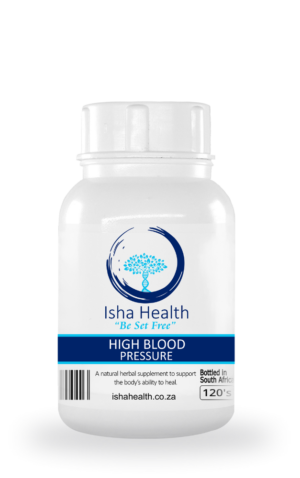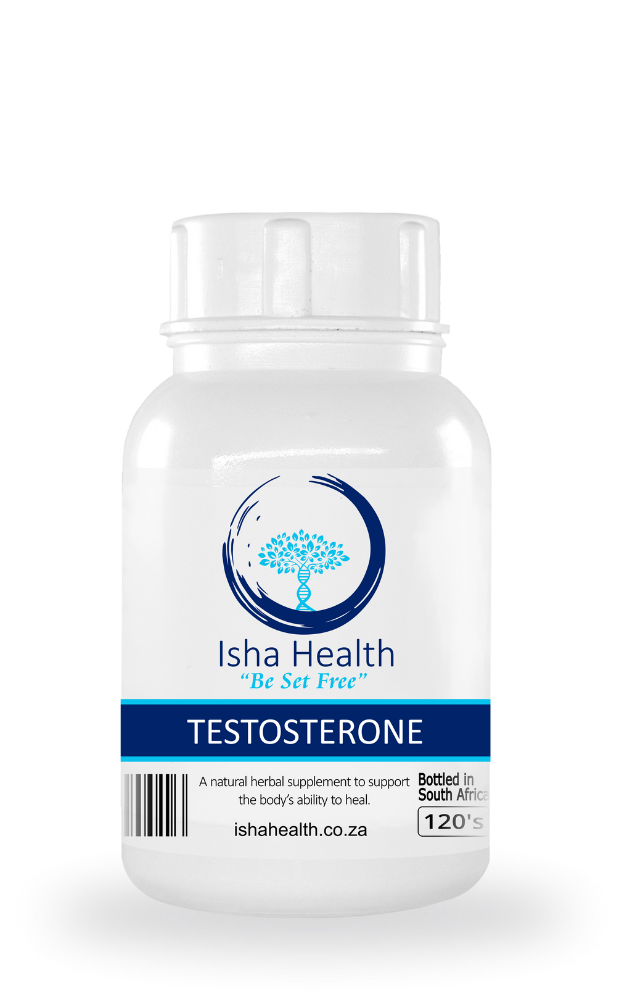
Testosterone
- 3-5 working days
- Hand-Made
- Manufactured in South Africa
- 100% Natural
- 100% Herbal products
- 100% Manufacturing Guarantee
Description
Directions for Use
Ingredients
Warning
Technical Information
Our Herbal Testosterone Supplement gently supports your body’s natural processes for optimal testosterone levels, promoting overall vitality, balanced hormones, and well-being.
2-4 x capsules 3x daily
Usually not required for children.
Children over 12-16 years:
1x Capsule 2x daily according to age.
Ashwaganda
Calcium Carbonate
Cordyceps
D-Aspartic acid
Fenugreek
Ginseng panax
Horny Goat weed
Maca Root
L-Arginine
Liquorice
Macuna Pruriens
Moringa
Muira Puma
Pumpkin seed
Selenium
Tongkat
Tribulus Terrestris
Vit B5, B6, D3
Zinc
Other African Herbs
Ingredients Traditionally used for this supplement
Ashwagandha: Nurtures the body’s resilience to stress, fostering an environment where natural testosterone production thrives, contributing to enhanced muscle size and reproductive health.
Calcium Carbonate: Aids the body in optimizing hormonal balance by reducing SHBG levels, supporting the natural availability of free testosterone.
Cordyceps: Empowers the body’s innate vitality, acting as a natural testosterone booster with adaptogenic qualities.
D-Aspartic Acid: Synchronizes with the body’s processes, naturally elevating luteinizing hormones to encourage Leydig cells, supporting the creation and release of testosterone. Fosters muscle mass and overall vitality.
Fenugreek: Acts as a supportive ally to the body’s natural processes, enhancing libido, energy levels, and the conversion of testosterone. Furostanolic saponins contribute to its effectiveness.
Ginseng Panax: Aids the aging body by naturally supporting cognitive function, preventing physical decline, and boosting energy levels, all while fostering testosterone production.
Horny Goat Weed: Functions as a cognitive booster and heart health supporter, potentially aiding the body in maintaining optimal testosterone levels.
L-Arginine: Empowers the body’s ability to enhance blood flow and muscle growth. Acts in harmony with the body to support testosterone levels and alleviate symptoms of low testosterone.
Liquorice: Balances cortisol levels, offering support to energy, DHEA, and testosterone, potentially benefiting erectile function and libido.
Maca Root: Elevates mood, enhances sexual performance, and acts as a natural testosterone booster. Supports libido, stamina, and endurance by nurturing the body’s own processes.
Macuna Pruriens: Promotes an increase in Luteinizing Hormone (LH) and testosterone while reducing prolactin. Supports the body’s natural dopamine production for hormonal balance.
Moringa: Boosts testosterone levels by supporting the body’s own mechanisms, acting as a ‘Sex Booster.’ Enhances sexual performance by modulating cortisol and increasing testosterone.
Muira Puama: Contains sterols that support the body’s production of sex hormones, promoting a stronger erectile response and overall sexual health.
Pumpkin Seed: Nourishes the body with omega-3 fatty acids and cucurbitin, supporting healthy testosterone levels, sperm count, and reproductive health.
Selenium: Complements the body’s testosterone production with antioxidant properties, contributing to overall reproductive health.
Stinging Nettle: Supports the body in reducing SHBG, enhancing free testosterone levels naturally. Benefits libido, cardiovascular health, and muscle tone.
Tongkat: Acts as a supportive antimicrobial, aphrodisiac, and potential testosterone booster. Promotes overall well-being, including bone health, by working with the body’s own processes.
Tribulus Terrestres: Supports the body’s natural vitality by acting as a testosterone booster, benefiting those with low testosterone. Acts synergistically with the body to support sexual function and libido.
Vitamin B5: Provides support to hormonal balance, aiding the body in maintaining overall well-being.
Vitamin B6: Supports the body’s hormonal regulation and energy metabolism, contributing to overall vitality.
Vitamin D3 – Cholecalciferol: Nurtures the body’s innate ability to produce testosterone, supporting bone health, immune function, and protection against osteoporosis, bacteria, and viruses.
Zinc: Supports the body’s own testosterone production, immune function, DNA production, wound repair, and sperm quality. Reduces SHBG binding affinity naturally.
Not suitable for pregnant or breastfeeding women.
Protect from sunlight.
Store below 25°c.
What is Testosterone?
Testosterone is a steroid hormone belonging to the androgen group, primarily produced in the testes in males and in smaller amounts in the ovaries in females. It plays a crucial role in the development and maintenance of male reproductive tissues and secondary sexual characteristics, such as facial hair and deepening of the voice during puberty.
Testosterone influences various physiological processes, including the growth and maintenance of muscle mass, bone density, and red blood cell production. It also contributes to overall energy levels, mood regulation, and cognitive functions. In males, testosterone supports sperm production (spermatogenesis) and contributes to reproductive health.
The regulation of testosterone levels is intricate, involving feedback loops between the hypothalamus, pituitary gland, and the testes. The hypothalamus releases gonadotropin-releasing hormone (GnRH), stimulating the pituitary gland to release luteinizing hormone (LH) and follicle-stimulating hormone (FSH). These hormones signal the testes to produce testosterone.
Testosterone circulates in the blood, with a portion bound to proteins like sex hormone-binding globulin (SHBG) and albumin. The remaining free testosterone is biologically active and able to exert its effects on target tissues.
Overall, testosterone is a key hormone with diverse roles in the body, impacting both reproductive and non-reproductive systems in males and, to a lesser extent, females.
The Process and path of Testosterone throughout the body
- Hypothalamus and GnRH: The hypothalamus releases pulsatile bursts of gonadotropin-releasing hormone (GnRH), orchestrating the release of LH and FSH from the pituitary gland.
- Pituitary Hormones (LH and FSH): LH stimulates Leydig cells in the testes to initiate the conversion of cholesterol to pregnenolone, the precursor of all steroid hormones, while FSH supports spermatogenesis indirectly.
- Steroidogenesis and Enzymes: The enzymatic processes involve 17-alpha-hydroxylase and 17-beta-hydroxysteroid dehydrogenase, crucial for converting pregnenolone to progesterone and then to androstenedione.
- Testosterone Synthesis in Leydig Cells: Androstenedione is further transformed into testosterone within Leydig cells, a process critical for male reproductive function and secondary sexual characteristics.
- Protein Binding and SHBG: Testosterone binds to proteins in the blood, notably sex hormone-binding globulin (SHBG), influencing its bioavailability and distribution throughout the body.
- Free Testosterone and Biological Activity: A fraction of unbound testosterone, known as free testosterone, remains biologically active, exerting effects on target tissues such as muscle, bone, and the central nervous system.
- Feedback Mechanisms and Hormonal Regulation: Elevated testosterone levels exert negative feedback on the hypothalamus and pituitary gland, modulating the pulsatile release of GnRH, LH, and FSH.
- Peripheral Metabolism: Testosterone undergoes peripheral metabolism, with 5-alpha-reductase converting it to dihydrotestosterone (DHT), a potent androgen, and aromatase converting it to estradiol.
- Excretion and Metabolites: Metabolites of testosterone, including glucuronide and sulfate conjugates, undergo hepatic metabolism and are eventually excreted through the kidneys.
- Clinical Implications: Understanding this intricate process is crucial in clinical settings, guiding interventions for conditions involving hormonal imbalance, reproductive issues, and androgen-related disorders.
Signs & Symptoms of low Testosterone in Males and Females
Low testosterone, also known as hypogonadism, can manifest with various signs and symptoms. It’s important to note that these symptoms can vary in severity, and experiencing one or more of them does not necessarily confirm low testosterone. Common signs and symptoms of low testosterone include:
Males
- Reduced Libido: Decreased interest in sexual activity.
- Erectile Dysfunction: Difficulty achieving or maintaining an erection.
- Fatigue: Persistent tiredness or low energy levels.
- Decreased Muscle Mass: Loss of muscle tissue or difficulty building muscle.
- Increased Body Fat: Accumulation of body fat, particularly around the abdomen.
- Mood Changes: Irritability, mood swings, or feelings of depression.
- Reduced Bone Mass: Decrease in bone density, potentially leading to osteoporosis.
- Cognitive Changes: Difficulty concentrating, memory issues, or reduced cognitive function.
- Hair Loss: Thinning of facial and body hair.
- Hot Flashes: Unexplained episodes of feeling warm or flushed.
Females
- Low Libido: Decreased interest in sexual activity.
- Fatigue: Persistent tiredness or low energy levels.
- Mood Changes: Changes in mood, including irritability or feelings of depression.
- Changes in Bone Density: Testosterone contributes to bone health, and low levels may impact bone density.
- Changes in Muscle Mass: Testosterone influences muscle development, and low levels may contribute to a decrease in muscle mass.
- Irregular Menstrual Cycles: Menstrual irregularities or disruptions in the menstrual cycle.
- Vaginal Dryness: Dryness and discomfort in the vaginal area.
- Reduced Breast Size: Changes in breast tissue, including a reduction in size.
- Hot Flashes: Unexplained episodes of feeling warm or flushed.
- Sleep Disturbances: Difficulty falling asleep or staying asleep.
It’s important to note that experiencing one or more of these symptoms does not necessarily confirm low testosterone, and a healthcare professional should be consulted for proper diagnosis and guidance.
Binding of Testosterone
The binding of testosterone involves its interaction with various proteins, and there is a connection between testosterone, adrenal hormones, and estrogen. Let’s delve into the details of this process:
- Testosterone Binding to Proteins: Testosterone, upon production, circulates in the bloodstream and binds predominantly to two key proteins: sex hormone-binding globulin (SHBG) and albumin. SHBG forms a stable complex with testosterone, influencing its availability for tissues. In addition to these proteins, the liver plays a crucial role in producing and regulating SHBG levels, impacting the overall binding dynamics of testosterone.
- Free Testosterone and Albumin-Bound Testosterone: While a fraction of testosterone remains unbound, termed free testosterone and biologically active, another portion binds to albumin. This albumin-bound testosterone, though less bioavailable than the free form, still exerts effects on target tissues. The liver, responsible for synthesizing albumin, contributes significantly to this binding process.
- Adrenal Connection: The adrenal glands, situated atop the kidneys, are integral to androgen production. They produce dehydroepiandrosterone (DHEA), a precursor to testosterone and estrogen. Peripheral tissues, including the skin and adipose tissue, further convert DHEA to testosterone. Thus, the adrenal glands and associated tissues collectively contribute to androgen synthesis.
- Estrogen Conversion: Testosterone undergoes aromatization, a process catalysed by the enzyme aromatase. This conversion results in the production of estrogen, specifically estradiol. Aromatase is not confined to a specific organ but is found in various tissues, including adipose tissue, the liver, and the brain, contributing to the complex interplay between testosterone and estrogen.
- Estrogen Feedback: Elevated estrogen levels provide negative feedback to the hypothalamus and pituitary gland, regulating the release of gonadotropins (LH and FSH). While the hypothalamus and pituitary gland are primarily brain structures, their role in hormonal regulation extends beyond binding, encompassing the broader endocrine feedback loop.
- Hormonal Homeostasis: The intricate interplay between testosterone, adrenal androgens, estrogen, and the liver contributes to hormonal homeostasis. The liver’s involvement in synthesizing binding proteins and metabolizing hormones adds a layer of complexity to this regulatory network. This delicate balance supports crucial physiological functions, including reproductive health, bone density, and overall well-being.
What happens to testosterone and estrogen during menopause?
- Estrogen Decline: Menopause, typically occurring around age 50, entails a significant decline in estrogen levels. Estrogen, crucial for regulating the menstrual cycle and supporting reproductive tissues, is primarily produced by the ovaries.
- Testosterone Decline: Alongside estrogen, testosterone levels also decrease during menopause. While present in smaller amounts in women compared to men, the ovaries contribute to testosterone production, and the decline in ovarian function affects its synthesis.
- Symptoms of Hormonal Changes: The hormonal shifts during menopause result in various symptoms, including hot flashes, night sweats, mood swings, and vaginal dryness. Estrogen’s decline is particularly associated with symptoms like hot flashes and changes in mood.
- Impact on Reproductive Tissues: Estrogen’s decline affects reproductive tissues, leading to changes such as vaginal dryness, thinning of the vaginal walls, and an increased risk of urinary tract infections.
- Bone Health: Estrogen’s role in maintaining bone density becomes evident during menopause, contributing to an increased risk of osteoporosis and bone fractures.
- Cardiovascular Changes: Estrogen’s cardiovascular protective effects diminish during menopause, potentially increasing the risk of cardiovascular issues.
- Metabolic Changes: Hormonal shifts can influence metabolism, with some women experiencing weight gain or changes in fat distribution.
- Management Options: Hormone replacement therapy (HRT) is an option to manage menopausal symptoms. HRT involves supplementing estrogen or a combination of estrogen and progesterone to alleviate symptoms.
While menopause is a natural part of a woman’s life, the experience can vary. Women facing menopausal symptoms or concerned about hormonal changes should consult healthcare professionals for personalized guidance and management options.
Why do some older women have too much testosterone and what are the physical signs thereof?
- Hormonal Changes: As women age, there can be shifts in hormonal balance, including a decline in estrogen levels and, in some cases, an increase in testosterone production. Conditions like polycystic ovary syndrome (PCOS) can lead to an imbalance in sex hormones, including elevated testosterone levels.
- Adrenal Disorders: Disorders affecting the adrenal glands, such as adrenal tumours or congenital adrenal hyperplasia, can lead to increased androgen production, including testosterone.
- Ovarian Conditions: Conditions affecting the ovaries, such as ovarian tumours or certain forms of ovarian cancer, may result in increased testosterone production.
- Medications: Some medications, such as anabolic steroids or certain hormonal therapies, can contribute to elevated testosterone levels.
- Lifestyle Factors: Obesity can be associated with increased testosterone levels in women. Physical inactivity and poor dietary habits can also contribute to hormonal imbalances.
Physical signs of elevated testosterone in older women may include excessive hair growth (hirsutism), acne, voice changes, menstrual irregularities, scalp hair thinning, clitoromegaly (enlargement of the clitoris), and an increase in muscle mass.
What happens in the liver with testosterone binding or decline?Top of Form
The liver plays a crucial role in the metabolism and regulation of hormones, including testosterone. Here’s how the liver is involved in processes related to testosterone binding and decline:
- Testosterone Metabolism: Testosterone undergoes metabolism in the liver. The liver is responsible for breaking down testosterone into various metabolites, including dihydrotestosterone (DHT) and estradiol (a form of estrogen). This metabolic process involves enzymes, primarily cytochrome P450, which convert testosterone into its active and inactive forms.
- Binding Proteins Synthesis: The liver is involved in the synthesis of sex hormone-binding globulin (SHBG), a protein that binds to testosterone and regulates its circulating levels. SHBG produced in the liver binds to testosterone in the bloodstream, affecting the hormone’s availability for tissues and organs.
- Estrogen Conversion: Aromatase, an enzyme present in the liver and other tissues, converts testosterone into estradiol, a form of estrogen. This conversion is part of the balance between testosterone and estrogen levels, and it contributes to the overall hormonal milieu.
- Transport in Bloodstream: After synthesis and metabolism in the liver, testosterone is transported in the bloodstream, bound to SHBG, albumin, or as free testosterone. The liver’s role in producing these binding proteins influences the distribution and availability of testosterone throughout the body.
- Hormonal Feedback Regulation: The liver responds to hormonal feedback loops that regulate the overall balance of sex hormones. For example, elevated estrogen levels can provide negative feedback to the hypothalamus and pituitary gland, influencing the release of gonadotropins (LH and FSH).
- Impact of Liver Disorders: Liver disorders, such as cirrhosis or hepatitis, can impact the metabolism of hormones, including testosterone. Liver dysfunction may affect the synthesis of binding proteins and alter the balance between testosterone and estrogen.
In summary, the liver is integral to the metabolism, synthesis of binding proteins, and overall regulation of testosterone. It plays a key role in maintaining the delicate balance between testosterone and other sex hormones in the body. Disruptions in liver function can influence the metabolism and regulation of testosterone, potentially leading to hormonal imbalances.
What role does high body fat play in the interaction between estrogen, estradiol, progesterone and testosterone in both males and females?
High body fat can significantly impact the interaction between estrogen, estradiol, progesterone, and testosterone in both males and females. Here’s how:
- Estrogen and Estradiol: High body fat contributes to increased estrogen synthesis, especially in postmenopausal women and men, as adipose tissue functions as a site for estrogen production. Enzymes within fat cells convert androgens, including testosterone, into estrogen, specifically estradiol. Elevated body fat levels may lead to hormonal imbalances, particularly an excess of estradiol.
- Testosterone: In both males and females, excess body fat is associated with lower testosterone levels. Adipose tissue contains aromatase, an enzyme that converts testosterone into estrogen. Increased aromatase activity in fat cells may result in higher testosterone-to-estrogen conversion, leading to reduced testosterone levels and potential hormonal disruptions.
- Progesterone: While the ovaries and testes are primary sites for progesterone production, adipose tissue also plays a role. Higher body fat levels may impact sex hormone-binding globulin (SHBG), influencing the availability of progesterone and other sex hormones. Adipose tissue’s involvement in hormone regulation can contribute to hormonal variations.
- Hormonal Imbalance: Elevated body fat creates an environment favouring estrogen dominance, potentially disrupting menstrual cycles in women and impacting fertility. In men, high body fat is associated with lower testosterone levels, affecting reproductive function, libido, and muscle mass. Hormonal imbalances contribute to various health concerns.
- Insulin Resistance: High body fat is often linked to insulin resistance, reducing cellular responsiveness to insulin. This condition can contribute to hormonal imbalances and is associated with disorders like polycystic ovary syndrome (PCOS) in women. Insulin resistance further exacerbates hormonal disturbances.
- Impact on Metabolism: Adipose tissue, being metabolically active, produces adipokines influencing hormonal regulation, insulin sensitivity, and inflammation. Changes in adipokine secretion can disrupt hormonal balance, contributing to health issues. Chronic inflammation associated with high body fat further compounds the impact on hormonal health.
- Health Risks: High body fat increases the risk of chronic conditions such as cardiovascular disease, diabetes, and certain cancers. These health risks, associated with excess body fat, further impact hormonal health and contribute to a cascade of physiological challenges.
Maintaining a healthy body weight through a balanced diet and regular exercise is crucial for overall hormonal health. This approach helps mitigate potential negative effects of excess body fat on estrogen, estradiol, progesterone, and testosterone levels, promoting a more balanced hormonal environment.
Ingredients which are traditionally used for this disorder
Technical info:
Ashwagandha: The active compounds in Ashwagandha include withanolides, sitoindosides, and alkaloids. These constituents contribute to its adaptogenic properties by modulating the HPA axis, reducing cortisol levels, and promoting an environment conducive to testosterone synthesis. Withanolides, in particular, have demonstrated anti-stress and anti-anxiety effects, potentially influencing the hypothalamic-pituitary-gonadal (HPG) axis for testosterone regulation.
D-Aspartic Acid: D-Aspartic Acid is an endogenous amino acid involved in the synthesis and release of gonadotropin-releasing hormone (GnRH) and luteinizing hormone (LH). Increased levels of LH stimulate Leydig cells in the testes to produce more testosterone. Its supplementation has shown promise in elevating testosterone levels and, consequently, promoting muscle growth and enhanced athletic performance.
Fenugreek: Fenugreek contains active compounds such as furostanolic saponins, diosgenin, and protodioscin. These compounds play a crucial role in enhancing libido, energy levels, and testosterone production. Furostanolic saponins, in particular, are believed to stimulate testosterone release by acting on the HPG axis, and diosgenin serves as a precursor for testosterone synthesis.
Ginseng Panax: Panax Ginseng contains ginsenosides, which exhibit adaptogenic properties. These compounds influence the adrenal glands, reducing cortisol levels and promoting an anti-stress environment. Additionally, ginsenosides have been associated with increased levels of testosterone and improvements in physical performance.
Horny Goat Weed: The primary active ingredient in Horny Goat Weed is icariin, a flavonoid. Icariin has demonstrated PDE5 inhibitory effects, similar to sildenafil, contributing to improved blood flow. It also influences nitric oxide levels, potentially enhancing erectile function. Its adaptogenic properties may positively impact testosterone levels and cognitive function.
Maca Root: Maca Root contains macamides and macaenes, unique compounds that contribute to its adaptogenic properties. These compounds influence the HPG axis, leading to increased testosterone production. Maca Root’s positive effects on mood, energy, and sexual function are attributed to these active constituents.
Mucuna Pruriens: Mucuna Pruriens is rich in L-dopa, a precursor to dopamine. Increased dopamine levels inhibit prolactin release, which can rise in response to declining testosterone levels. L-dopa also stimulates the release of GnRH, LH, and subsequently, testosterone, contributing to improved reproductive health.
Muira Puama: Muira Puama contains sterols, including beta-sitosterol. These compounds serve as building blocks for sex hormones like testosterone. The herb’s impact on relaxing the Corpus Cavernosa and improving blood flow contributes to erectile function and sexual health.
Tongkat Ali: Tongkat Ali contains quassinoids and eurycomanone, which have demonstrated anti-estrogenic effects. This herb acts on the HPG axis, stimulating the release of LH and subsequently enhancing testosterone production. Additionally, Tongkat Ali’s antioxidant properties contribute to overall reproductive health.
L-Arginine: L-Arginine is a precursor to nitric oxide (NO), a vasodilator that enhances blood flow. Increased NO levels contribute to improved erectile function. While not a direct testosterone booster, L-Arginine’s role in supporting blood flow is crucial for overall reproductive health and mitigating symptoms associated with low testosterone.
Calcium Carbonate: Calcium Carbonate’s role as a testosterone booster is associated with its impact on reducing SHBG levels. By decreasing SHBG, more testosterone is available in its free form, enhancing its bioavailability.
Cordyceps: Cordyceps contains bioactive compounds like cordycepin and polysaccharides. These constituents contribute to its adaptogenic properties and potential role in modulating the endocrine system. While more research is needed, Cordyceps may play a part in supporting testosterone levels.
Liquorice: Liquorice contains glycyrrhizic acid, which has been shown to influence cortisol metabolism by inhibiting 11-beta-hydroxysteroid dehydrogenase. This inhibition leads to increased cortisol levels, which may positively impact energy levels, DHEA, and testosterone synthesis.
Moringa: Moringa contains bioactive compounds such as quercetin, chlorogenic acid, and beta-sitosterol. These compounds contribute to its antioxidant and anti-inflammatory properties, potentially supporting testosterone production by reducing oxidative stress and inflammation.
Pumpkin Seed: Pumpkin Seed contains omega-3 fatty acids and cucurbitin. These compounds contribute to its testosterone-boosting properties, potentially by supporting testicular health and reducing oxidative stress. The high antioxidant content also aids in maintaining healthy testosterone levels.
Selenium: Selenium is an essential trace element that acts as a cofactor for selenoproteins involved in antioxidant defense. Its role in reducing oxidative stress may indirectly support testosterone production by protecting Leydig cells from oxidative damage.
Stinging Nettle root: Stinging Nettle contains lignans and beta-sitosterol. These compounds contribute to its anti-inflammatory and anti-aromatase effects, potentially reducing estrogen levels and increasing free testosterone. Additionally, Stinging Nettle’s ability to reduce SHBG enhances the availability of free testosterone.
Tribulus Terrestris: Tribulus Terrestris contains steroidal saponins, particularly protodioscin. These compounds may mimic the action of endogenous androgens, contributing to improved sexual function and libido. However, its direct impact on testosterone levels remains debated.
Vitamin B5: Vitamin B5, or pantothenic acid, is involved in steroid hormone synthesis, including testosterone. While its specific role in testosterone regulation is not fully elucidated, its inclusion in the supplement may contribute to overall hormonal balance.
Vitamin B6: Vitamin B6, or pyridoxine, is involved in the metabolism of steroid hormones, including testosterone. Adequate levels of Vitamin B6 are crucial for maintaining hormonal balance, and its supplementation may support testosterone production.
Vitamin D3 – Cholecalciferol: Vitamin D3 plays a vital role in testosterone synthesis. It acts as a prohormone, and its conversion in the skin is the primary source of active Vitamin D. Vitamin D3 deficiency has been associated with decreased testosterone levels, making its supplementation crucial for maintaining hormonal health.
Zinc: Zinc is an essential mineral involved in numerous enzymatic reactions, including those related to testosterone synthesis. It inhibits aromatase activity, reducing the conversion of testosterone to estrogen. Zinc also plays a role in DNA synthesis, wound healing, and maintaining sperm quality. Its impact on lowering SHBG binding affinity enhances free testosterone levels.

